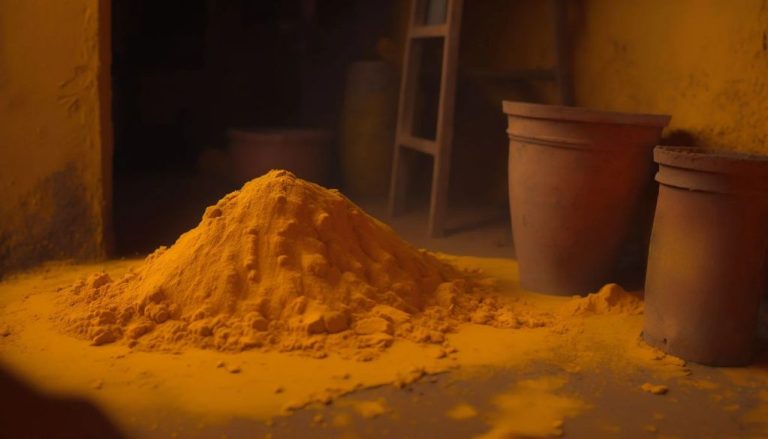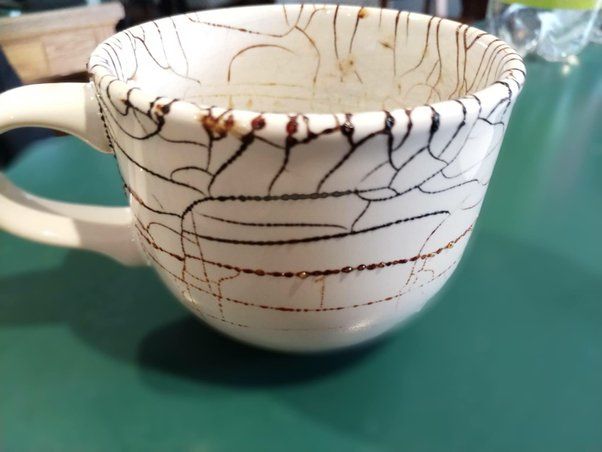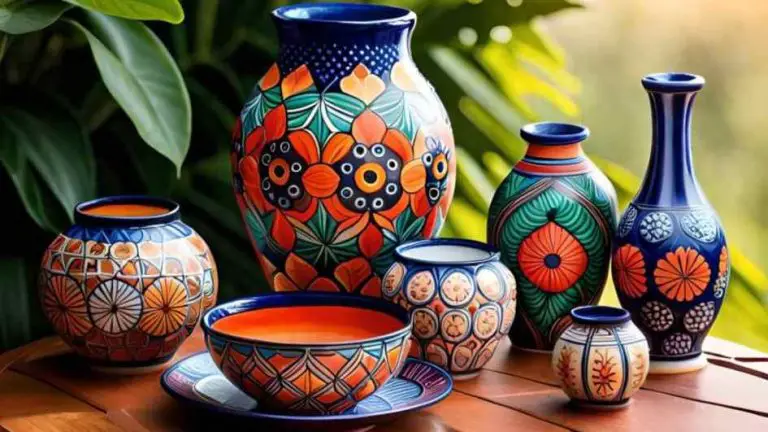What Type Of Clay Is Used In Clay Paint?
Clay paint is a natural, eco-friendly paint made from clay, water, and natural pigments. It has been used for centuries in traditional art forms and architecture across cultures. Unlike modern synthetic paints, clay paints contain no harsh chemicals, VOC’s, or solvents.
Clay paints are primarily used on interior walls and ceilings to add color, texture, and a rustic aesthetic. The natural earthy tones of clay paints provide a soothing ambiance. Clay paint can also be used on exterior surfaces including wood, stucco, and stone. However unlike modern paints, exterior clay paint requires extra protection from the elements.
Clay paint has seen a resurgence in popularity due to its sustainability, non-toxicity, breathable nature, and old world charm. It provides a handmade alternative to mass-produced paints. The process of making and applying clay paint connects people back to the earth.
Types of Clay Used
There are three main types of clay that can be used to make clay paint – kaolin clay, bentonite clay, and illite clay. Each type has unique properties that make them suitable for different painting techniques and effects.
Kaolin Clay
Kaolin clay, also known as China clay, is the most common clay used in clay paint. It has a fine particle size and a smooth texture that allows it to spread evenly on surfaces. Kaolin clay is relatively lightweight and absorbent. When mixed into paint, kaolin clay helps the paint adhere to surfaces and provides opacity. It dries to a matte finish that can be sealed for protection.
Bentonite Clay
Bentonite clay contains high amounts of minerals like iron and magnesium that give it unique properties. When mixed with water, bentonite clay can absorb several times its weight and volume in liquid. This makes bentonite clay paint highly workable and malleable. Bentonite clay has a sticky texture that allows clay artists to build up dimensional forms. It dries to a textured, earthy finish.
Illite Clay
Illite clay is composed of shiny mica flakes that give surfaces painted with it a subtle shimmering effect. The platelet structure of illite clay particles allows them to adhere tightly together when dry. Illite clay based paints contract slightly as they dry. This allows artists to create fine cracks and crazing effects in the surface.
Properties of Kaolin Clay
Kaolin clay, also known as China clay, is distinguished by some key properties that make it well-suited for use in clay paints. Here are some of the notable characteristics of kaolin clay:
Very Fine Particle Size
Kaolin clay particles are very small, fine grained, and measure below 2 microns in size. This fine particle size allows kaolin clay to be smoothly ground into paint and provides a smooth application with good opacity and coverage.
High Brightness
Kaolin clay has a high brightness rating and whiteness due to low levels of impurities. This allows kaolin clay paints to maintain a bright white color without dulling or discoloration over time.
Low Plasticity
The particles in kaolin clay are plate-shaped which gives kaolin a low plasticity and makes it less sticky compared to other clays. This provides a smooth, flexible application when used in paint.
With its fine particle size for smooth coverage, bright white color, and low plasticity for an easy application, kaolin clay is an excellent choice as a base for high-quality clay paints.
Properties of Bentonite Clay
Bentonite clay is known for its high plasticity, swelling ability, and water absorption. The clay particles in bentonite have a sheet-like structure that enables them to expand significantly when mixed with water. This allows bentonite to absorb large amounts of water and swell up to 15-18 times its dry size. The spaces between the stacked clay sheets provide surface area for water absorption while allowing the clay to still maintain its solid form. The swelling action of bentonite allows it to act as a binder and give body to paints and coatings. This helps thicken the paint and provides good adhesion to surfaces.
Bentonite’s water absorption also enables it to suspend pigments uniformly in paint. The charged surfaces of bentonite clay particles cause the pigment particles to repel each other so they remain separated. This prevents the pigments from settling to the bottom of the can. Overall, bentonite’s high plasticity, swelling ability, and water absorption make it an excellent additive for clay paints. It helps improve the paint’s viscosity, binding, adhesion, and ability to hold pigments in suspension.
Properties of Illite Clay
Illite clay has moderate plasticity and low shrinkage, making it a versatile clay for paint-making. Its flaky platelet structure gives it a smooth, satiny texture when mixed into paint. The moderate plasticity allows illite clay to be easily shaped and molded when wet, while still drying strong and rigid. The low shrinkage rate minimizes cracking and warping as the clay dries.
Illite’s fine particle size also contributes to its usefulness for paint. The tiny platelet structure makes it easy to achieve a smooth consistency without grittiness. Illite disperses well in water and adheres to surfaces evenly and tightly. The small particle size also allows illite paint to penetrate deeply into porous surfaces.
With properties ideal for application, adhesion, and durability, illite is an excellent choice as a binder and extender in clay paint formulations. Its versatility suits many project needs from wall paints to clay plasters. Illite delivers quality results as a sustainable and natural paint ingredient.
Selecting the Right Clay
When selecting clay for use in clay paint, you’ll want to consider the desired properties, cost, and availability.
Kaolin clay is very soft and smooth, making it ideal for spreading easily onto walls and surfaces. It also has good binding properties. However, kaolin is more expensive and can be harder to find than other clays. Bentonite clay is extremely absorbent and can hold a lot of pigment. It’s also very affordable and widely available. The downside is that bentonite has a grittier texture that may make application more difficult. Illite clay falls somewhere in between kaolin and bentonite in terms of properties. It spreads well but may not hold color quite as intensely. Illite is moderately priced and accessible.
Think about the surface you are planning to paint and your desired finish. If you want ultra-smooth application on very fine surfaces, kaolin may be worth the extra cost. For large wall sections or outdoor murals where texture isn’t as important, inexpensive bentonite could work well. Test samples with the various types of clay paint to see what works best for your project needs and budget.
Preparing the Clay
Properly preparing the clay is an important step before using it as paint. Here are some key steps:
Washing – The clay should be washed thoroughly to remove any impurities. Place the clay in a bucket of water and allow it to soak for several hours so the clay fully saturates. Pour off the water and repeat the process until the water runs clear.
Crushing – Once washed, the clay is dried fully and then crushed into a powder. Using a mortar and pestle, crush the clay into a fine powder with no large lumps remaining.
Screening – Sift the crushed clay powder through a fine mesh screen to remove any particles that are too coarse for paint. This helps achieve a smooth consistency.
Mixing – The screened clay powder can then be mixed with water and any desired additives to achieve the ideal viscosity for paint. Some common additives are latex, wheat paste, orchid root, and natural pigments.
Taking the time to properly wash, crush, screen and mix the clay results in a high quality clay paint ready for application.
Applying Clay Paint
Clay paint requires some surface preparation before application. Start by ensuring the surface is clean and dry. Any loose paint or debris should be sanded or scraped off. For very smooth surfaces like drywall, add a light sanding to create some texture for the clay to adhere to.
Clay paint can be applied with a paintbrush, roller, trowel, or even your hands. Use a paintbrush for detailed areas and edges. A roller will work well for large flat surfaces. Trowels are great for textured finishes. Using your hands allows you to really connect with the material and texture it in creative ways.
Apply the clay paint in thin layers, allowing each coat to dry fully before adding another. The right consistency is similar to a thick pancake batter. Avoid applying too thick of a layer as it may crack while drying. Build up the layers gradually.
Once completely dry, seal the clay paint with a natural sealer like linseed oil or beeswax. This will protect the finish and keep it looking beautiful over time. Apply 2-3 thin coats of sealer, allowing it to dry between coats. The sealer will give the paint a slight sheen while allowing the texture to remain visible.
Benefits of Clay Paint
Clay paint offers several benefits that make it an attractive option for walls and other surfaces. Here are some of the main advantages of using clay paint:
Natural – Clay paints are made from all-natural clays, minerals, and pigments. They contain no synthetic chemicals, VOCs, or toxic ingredients. This makes them a healthy, non-toxic choice for indoor spaces.
Breathable – Clay paint allows interior walls to breathe. The clay binds to the surface but does not entirely seal it. This allows some moisture to pass through, preventing condensation and mold growth. Clay’s breathability makes it suitable for humid environments.
Absorbent – Clay paint’s porous nature gives it absorptive properties. It can help absorb odors and excess moisture in the air. This contributes to a comfortable indoor environment.
Antimicrobial – Clay contains natural antimicrobial elements, allowing clay paint to inhibit mold, bacteria, and other microbes from growing on the painted surface. This helps maintain healthier indoor air quality.
Conclusion
In summary, clay paint offers numerous benefits over traditional paints, including its natural composition, non-toxicity, easy application, and durability. While the most common clays used are kaolin, bentonite, and illite, the characteristics of the paint can vary greatly depending on factors like clay type, preparation method, application technique, and number of coats. As people continue seeking healthier, more eco-friendly paint alternatives, the popularity of clay paints will likely continue rising. With proper application and maintenance, clay paints can provide a beautiful, natural finish for years to come.
Looking ahead, innovations in clay processing and binder additives will open up new possibilities for clay paints. We may see new colors, textures, and performance enhancements that make clay paints an even more versatile and competitive option versus traditional paints. While traditional paint companies now offer some “natural” and “zero-VOC” options, clay paint still provides unparalleled benefits in terms of health, sustainability and natural aesthetics. For those seeking to avoid synthetic ingredients and utilize the earth’s bounty, clay paints will remain popular for decorating both interiors and exteriors.





